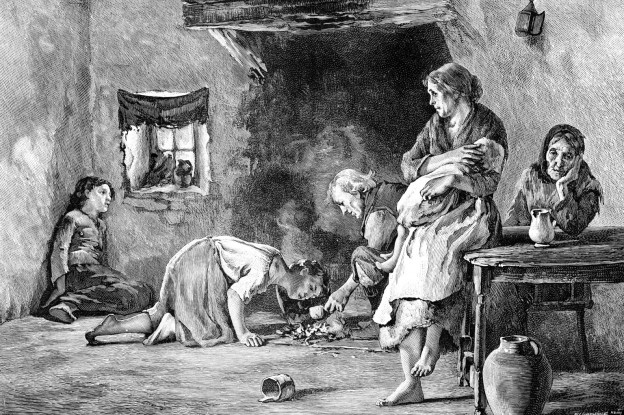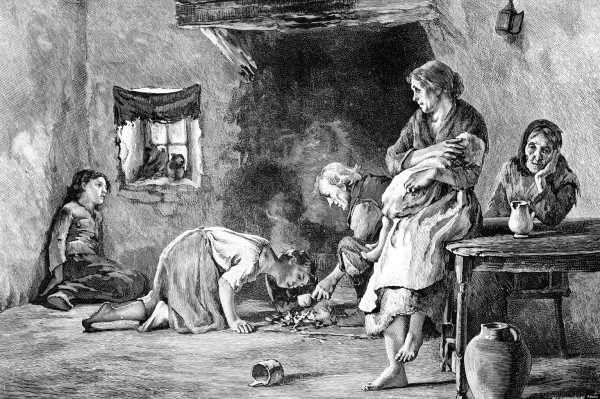‘On the day after the examination of the Irish schools,’ continues Mr. Brannigan, ‘[Dr Edgar] took a walk with me on the Killala Road, when a man in an adjoining field attracted his attention. We wended our way to him, and, in answer to our inquiries, he informed us that he was searching for potatoes; but that, as others had been there before him on the same errand, it was nearly labour in vain — adding that he saw nothing but death before himself and the children. Dr. Edgar asked him for the loy, or spade; and, when it was presented to him, handled it as skilfully as if he had been trained to husbandry. He dug fully seven yards, and made several other experiments on spots around him. All the fields were then treated as common property, for the owners thought it only loss of time to turn over the soil. When the digging was completed, Dr Edgar gathered up the potatoes, carried them to St. Patrick’s Well adjoining, washed them there, tied them up in a silk pocket-handkerchief, and deposited the parcel in his pocket. On handing back the loy, he put a piece of silver into the hand of the poor man, who seemed confounded, not well knowing how to interpret what had just occurred. It was then currently believed in the neighbourhood that, in a pitched battle at Downpatrick Head, the Connaught fairies had been vanquished, and that the northern fairies had blighted, or rather carried off, the potato crop. The poor man, as I subsequently learned, after witnessing the odd performance of his odd-looking visitor — and particularly the washing of the potatoes in St. Patrick’s Well — was impressed with the idea that the dark-visaged stranger might be the commander-in-chief of the victorious gentry, and that it would be prudent to beware of him. But the piece of silver, under the circumstances, was a temptation too strong for him to resist. He therefore turned his back on us, and after spitting on the coin by way of precaution, lodged it in his pocket (Killen 1869).’


